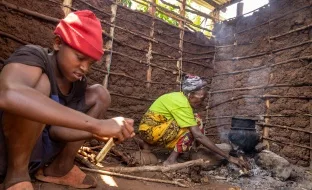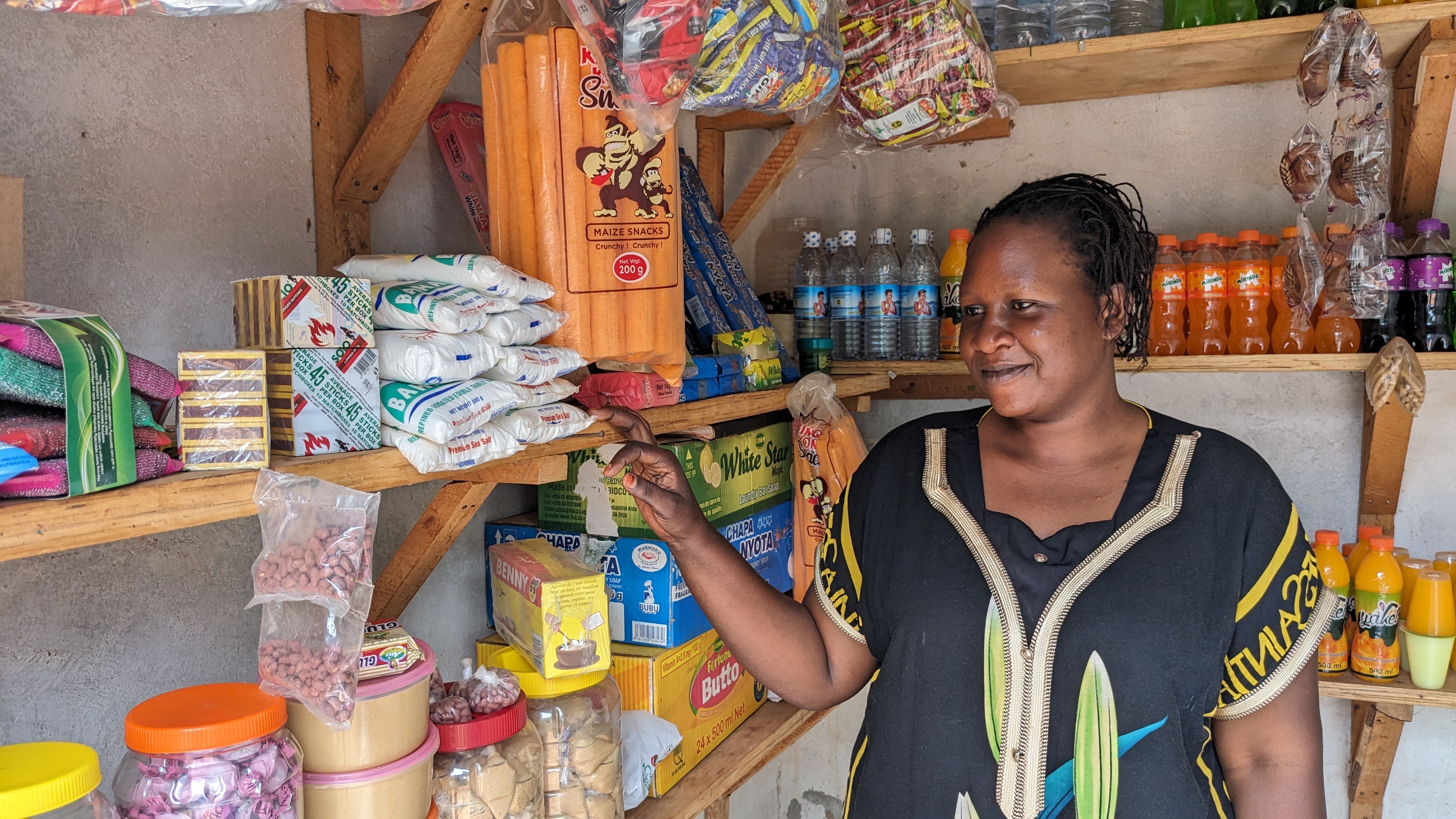This weekend, PBS News Hour featured GiveDirectly in a long, on-the-ground segment on our work. Their reporting included interviews with co-founder Michael Faye, basic income research co-lead Professor Alan Krueger, as well as several recipients from our standard and basic income cash transfer programs.
GIVEDIRECTLY IN THE NEWS
1. Group gives cash aid to rural Kenyans, then studies its effects
PBS News Hour, Sam Weber and Melanie Saltzman, April 8, 2017
When it comes to humanitarian aid for Africa, traditionally it has meant taxpayer-funded programs like PEPFAR or privately-funded shipments of medical supplies, food and other goods. A non-profit organization called GiveDirectly is pioneering another approach in eastern Africa: giving cash unconditionally to the needy. The latest project involves providing what’s called a “universal basic income,” whereby every adult in a designated area receives a regular cash payment. In tonight’s signature segment, NewsHour Weekend Special Correspondent Christopher Livesay reports from Kenya.
CASH TRANSFERS IN THE NEWS
2. Faces of the world’s extreme poor
CBS News, Renée Byer, April 10, 2017
Pulitzer Prize-winning photojournalist Renée Byer has spent years photographing a world we don’t often want to see – the faces of those living in extreme poverty. Those photographs and the stories they capture are part of a new traveling interactive photo exhibit, “Living on a Dollar a Day.”
3. Inside Kenya’s pesa ya wazee drive
Standard Media, April 9, 2017
The objective of the programme, she said, was to provide regular and predictable cash transfer to vulnerable older persons so to improve their livelihoods. “We will fully embrace the government’s vision of ensuring our older people are afforded an opportunity to live more comfortable livelihoods that will ensure they stay with us longer.”
4. Drought in Kenya brings a surprise: More girls in school
Reuters, Isaiah Esipisu, April 5, 2017
But since 2013, Ipapai’s family has received cash transfers under the Hunger Safety Net Programme (HSNP), implemented by the government through the National Drought Management Authority. The programme gives 5,400 Kenyan shillings ($52) every two months to the poorest and most vulnerable households in northern Kenya – and lets them decide what to do with the money.
EFFECTIVE ALTRUISM IN THE NEWS
5. Mega-gifts Are Rising and Alumni Giving Is Shrinking. Which Means What, Exactly?
Inside Philanthropy, Mike Scutari, April 10, 2017
The drop in alumni giving also runs parallel with the rise of “effective altruism” among younger donors who doubt whether giving to their alma mater is the way to get the most bang for their donation buck. Back in September, I called “effective altruism” a university fundraiser’s worst nightmare. The idea stipulates that the best metric in gauging a philanthropic gift is “lives saved per dollar.” How can donors in good faith give $1 million for, say, a new football stadium scoreboard given the Syrian refugee crisis or looming cuts to the National Institutes of Health? A February 2016 Yale Daily News article titled “Alumni Donating Hits New Low” illustrates “effective altruism” in action.
BASIC INCOME IN THE NEWS
6. Is monetizing federal land the way to pay for basic income?
Tech Crunch, Zoltan Istvan, April 10, 2017
I recently declared my run as a Libertarian for California governor in 2018, and I gently support the idea of a state-funded basic income to offset the effects of ubiquitous automation. A basic income would give every Californian some money — and it makes sense to start such a dramatic program here in the Golden State, since this is where much of the human-job-replacing-tech is created.
7. Bring basic income to B.C., says politician behind Ontario pilot project
CBC News, Clare Hennig, April 10, 2017
A pilot project to give people struggling under the poverty line a guaranteed salary with no strings attached is currently underway in Ontario and the man behind the idea is in Vancouver today, making the case that it’s time for a basic income in B.C. too. Former Conservative Senator Hugh Segal, a strong advocate for the basic income model, penned the provincial discussion paper that prompted the pilot project in Ontario. He explained to On The Coast host Stephen Quinn why he believes spending is key to saving when it comes to poverty reduction.
8. Why India Is Ready for a Universal Basic Income
Foreign Affairs, Shamika Ravi, April 6, 2017
The decision to simply hand out cash to everyone is not new and, of course, quite political. In 2013, the Indian government had also toyed with a variant of universal basic income known as “direct cash transfer,” but it never took off because of the difficulties in determining who should receive such payments. But setting all that aside, the concept of universal income is a rather simple and appealing one: replace existing social programs with a comprehensive cash payment. And that payment doesn’t have to be large. The Finance Ministry’s economic survey estimated that a modest sum of $4 per person per month could reduce India’s poverty level from 22 percent at present to seven percent. The cost would be a mere two percent of GDP, or $42 billion, which is approximately the same amount the government spends in total on food, fuel, and fertilizer subsidies.

